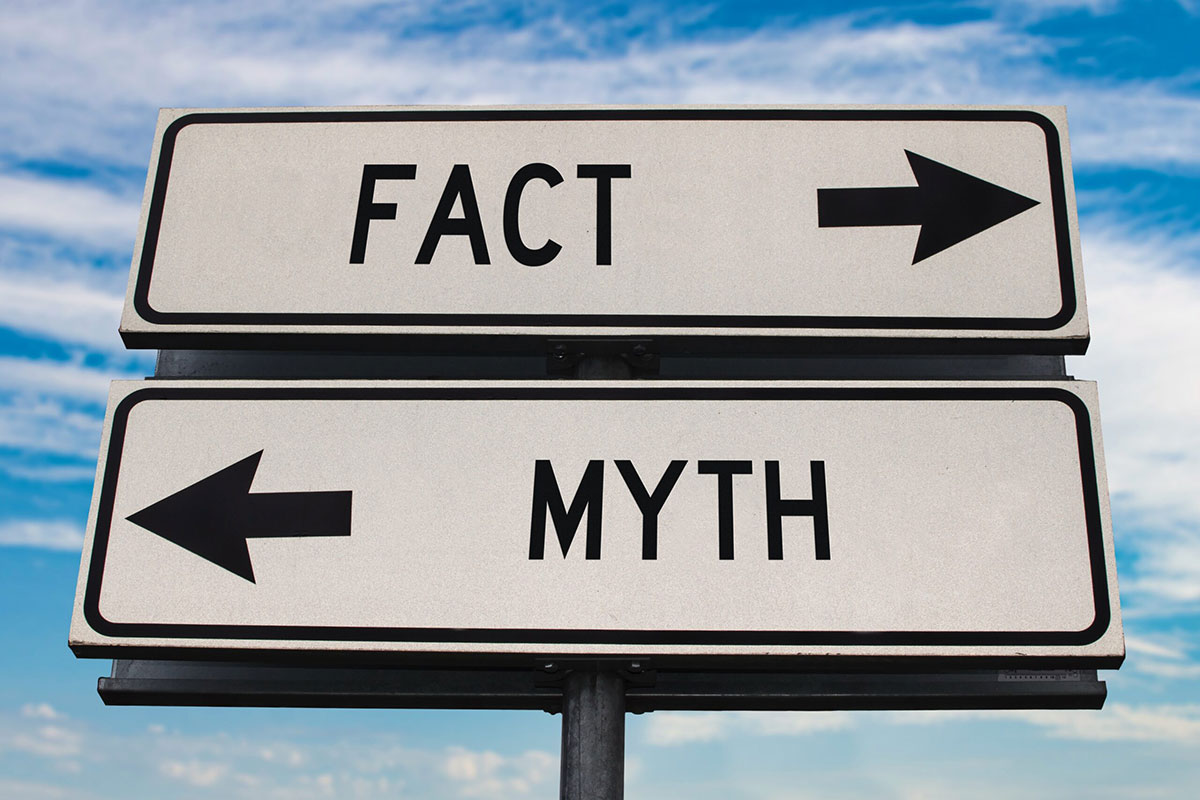Want to help Fact Check by Woodhull? Let us know how you’re using the information. Just drop us a note at [email protected] and share your experience.
P.S. Don’t forget to credit Fact Checked by Woodhull when citing this work.
For over a decade, pundits, legislators and campaigners have argued that viewing porn leads to erectile dysfunction (ED), relationship issues or difficulty achieving orgasm.
Associations between porn use and sexual desire, erection and ejaculation are inconsistent and limited.1 Anxiety and other mental health issues, not porn, are the biggest indicator of medically unrelated erectile dysfunction. (And porn viewership does not appear to increase the anxiety or depression associated with erectile dysfunction.2 ) In women, more frequent pornography use during masturbation predicted more easily feeling arousal and less difficulty experiencing orgasm, resulting in greater pleasure.3 Romantic relationships have also shown to be neutrally or positively impacted by porn use. While masturbation frequency can negatively impact relationships, porn alone can actually increase sexual satisfaction in a relationship.4
- While anecdotal reports and some studies purport to show a link between rising ED rates and increased porn consumption, they fail to establish actual causation. Anxiety, not porn, is the biggest predictor of erectile dysfunction.
- Other studies, which purport to show a link between pornography viewing and disinterest in real-world partners fail to account for pre-existing relationship dissatisfaction — in other words, those in unhappy relationships may be more likely to watch porn. In fact, when couples watch porn together or use porn to expand their sexual variety, it can have a beneficial effect on their relationship.
Myth 1: Watching Porn Leads to Erectile Dysfunction
Scores of young men are seeking prescriptions for Viagra because of a mysterious plague of early onset “erectile dysfunction.” It’s no mystery. They are not able to get excited about normal, in person sex because they are numb and desensitized from all the porn. — Matt Walsh, The Daily Wire
Does porn impede sexual function?
No, porn viewership alone is not associated with sexual function.
Research shows that organically occurring physical disorders and psychological issues, such as anxiety, stress, or depression, are the primary causes of erectile dysfunction.5 6 7 Men with anxiety disorders are at higher risk of developing erectile dysfunction8 — and anxiety has significantly increased in the last 15 years,9 10 which may explain the reported increase in rates of erectile dysfunction. In particular, there has been a rapid increase of anxiety rates in men under fifty11, which is the same demographic most likely to experience erectile dysfunction due to an underlying psychological issue.12
Studies and anti-porn agencies frequently cite research that draws a correlation between pornography use and erectile dysfunction or difficulty orgasming. These studies provide little evidence as to whether viewing pornography causes erectile dysfunction.
Myth 2: Watching porn leads to divorce or real world sexual dissatisfaction
“Statistics have shown that married couples who start watching pornography double their chances of divorcing within two years following the pornography use.” — Karolyn Webster, Liberty University
Does porn minimize desire to have sex with partners?
No, porn viewership alone is not associated with desire to sexually connect with partners.
In fact, research has shown that more time viewing sexual content was associated with greater desire for a partner.13 It can also contribute to expansion of sexual variety within the relationship, which increases sexual satisfaction.14 In women specifically, frequency of pornography use did not predict overall relationship satisfaction or sexual relationship satisfaction.15
Most research overlooks the likelihood that porn viewership would organically increase with relationship dissatisfaction, conflict or sexual disconnect has already occurred. Perry & Schleifer16 report association between increased pornography viewership and divorce but acknowledge their study does not account for sexual satisfaction in the marriage before pornography use increased. In other words, people who are already having relationship difficulties may watch more porn. Additionally, research often fails to separate pornography from masturbation, conflating the impact of solo masturbation with pornography viewership. When studies distinguish between masturbation and pornography, they find that more masturbation (not pornography) is related to poor relational satisfaction.17
Policy Suggestions
- Increased access to therapy to help people struggling with sex-related anxiety18 19
- Sex positive education that centers self-awareness, consent, and pleasure
- Support agencies and programs that center de-stigmatizing and normalizing sexual health & expression20 21 22
See also:
Is There a Link Between Porn Use and Relationship Satisfaction? Actually, No (Sex & Psychology)
Don’t blame porn for erectile dysfunction. The truth is complex (The Guardian)
Four Truths About ‘Porn Addiction’ Myths (The Body)
1. Landripet, Ivan. and Aleksandar Štulhofer. “Pornography Use and Male Sexual Health Disturbances.” J Sex Med, no. 12 (2015): 1136-1139. https://doi.org/10.1111/jsm.12853
2. Prause, Nicole and James Binnie. “Reboot/NoFap Participants Erectile Concerns Predicted by Anxiety and Not Mediated/Moderated by Pornography Viewing.” Journal of Psychosexual Health, no. 4 (2022):252-254. doi:10.1177/26318318221116354
3.McNabney, Sean M., Krisztina Hevesi and David L. Rowland. “Effects of Pornography Use and Demographic Parameters on Sexual Response during Masturbation and Partnered Sex in Women.” Int J Environ Res Public Health, no. 9 (2020): 3130. doi: 10.3390/ijerph17093130.
4. Miller, Dan J., Kerry A. McBain, Wendy W. Li and Peter T.F. Raggatt. “Pornography, preference for porn-like sex, masturbation, and men’s sexual and relationship satisfaction.” Personal Relationship, no. 26 (2019): 93–113. https://doi-org.ciis.idm.oclc.org/10.1111/pere.12267
5. Prause, Nicole and James Binnie. “Reboot/NoFap Participants Erectile Concerns Predicted by Anxiety and Not Mediated/Moderated by Pornography Viewing.” Journal of Psychosexual Health, no. 4 (2022):252-254. doi:10.1177/26318318221116354
6. Velurajah, Rajalaxmi, Oliver Brunckhorst, Muhammed Waqar, Isabel McMullen and Kamran Ahmed. “Erectile dysfunction in patients with anxiety disorders: a systematic review.” International journal of impotence research, no. 34 (2022): 177-186. doi:10.1038/s41443-020-00405-4
7. Sooriyamoorthy, Thushanth & Stephen W. Leslie. “Erectile dysfunction.” National LIbrary of Medicine.” (2023). https://www.ncbi.nlm.nih.gov/books/NBK562253/
8. Velurajah, Rajalaxmi, Oliver Brunckhorst, Muhammed Waqar, Isabel McMullen and Kamran Ahmed. “Erectile dysfunction in patients with anxiety disorders: a systematic review.” International journal of impotence research, no. 34 (2022): 177-186. doi:10.1038/s41443-020-00405-4
9. Goodwin Renee D., Andrea H. Weinberger, June H. Kim, Melody Wu and Sandro Galea. “Trends in anxiety among adults in the United States, 2008-2018: Rapid increases among young adults.” J Psychiatr Res, no. 130 (2020): 441-446. doi: 10.1016/j.jpsychires.2020.08.014.
10. KFF “Latest Federal Data Show That Young People Are More Likely Than Older Adults to Be Experiencing Symptoms of Anxiety or Depression.“ KFF: News Release. (2023). https://www.kff.org/mental-health/press-release/latest-federal-data-show-that-young-people-are-more-likely-than-older-adults-to-be-experiencing-symptoms-of-anxiety-or-depression/#:~:text=The%20mental%20health%20and%20substance,to%2032.3%20percent%20in%202023.
11. Goodwin Renee D., Andrea H. Weinberger, June H. Kim, Melody Wu and Sandro Galea. “Trends in anxiety among adults in the United States, 2008-2018: Rapid increases among young adults.” J Psychiatr Res, no. 130 (2020): 441-446. doi: 10.1016/j.jpsychires.2020.08.014.
12. Sooriyamoorthy, Thushanth & Stephen W. Leslie. “Erectile dysfunction.” National LIbrary of Medicine.” (2023). https://www.ncbi.nlm.nih.gov/books/NBK562253/
13. Prause, Nicole and James Pfaus. “Viewing Sexual Stimuli Associated with Greater Sexual Responsiveness, Not Erectile Dysfunction.” Sex Med, no. 3 (2015):90-98. doi:10.1002/sm2.58
14. Miller, Dan J., Kerry A. McBain, Wendy W. Li and Peter T.F. Raggatt. “Pornography, preference for porn-like sex, masturbation, and men’s sexual and relationship satisfaction.” Personal Relationship, no. 26 (2019): 93–113. https://doi-org.ciis.idm.oclc.org/10.1111/pere.12267
15. McNabney, Sean M., Krisztina Hevesi and David L. Rowland. “Effects of Pornography Use and Demographic Parameters on Sexual Response during Masturbation and Partnered Sex in Women.” Int J Environ Res Public Health, no. 9 (2020): 3130. doi: 10.3390/ijerph17093130.
16. Perry, Samuel L. and Cyrus Schleifer. “Till Porn Do Us Part? A Longitudinal Examination of Pornography Use and Divorce.” J Sex Res, no. 55 (2018): 284-296. doi:10.1080/00224499.2017.1317709
17. Perry, Samuel L. and Cyrus Schleifer. “Till Porn Do Us Part? A Longitudinal Examination of Pornography Use and Divorce.” J Sex Res, no. 55 (2018): 284-296. doi:10.1080/00224499.2017.1317709
18. Lafortune, David, Marianne Girard, Éliane Dussault, Mathieu Philibert, Martine Hébert, Marie-Aude Boislard, Mathieu Goyette and Natacha Godbout. Who seeks sex therapy? Sexual dysfunction prevalence and correlates, and help-seeking among clinical and community samples. PLoS One, no. 18(2023):e0282618. doi: 10.1371/journal.pone.0282618.
19. Sever, Zoe and Laura M. Vowels. “Barriers to Seeking Treatment for Sexual Difficulties in Sex Therapy.” Journal of Couple & Relationship Therapy, (2023) DOI: 10.1080/15332691.2023.2264470
20. Pitts, Robert A. and Richard E. Greene. “Promoting Positive Sexual Health.” Am J Public Health, no. 110 (2020):149-150. doi: 10.2105/AJPH.2019.305336.
21. Singh, Von Arushi and Anne Philpott. “Pleasure as a measure of agency and empowerment.” Medicus Mundi Schweiz, Bulletin 151 (2019). https://thepleasureproject.org/wp-content/uploads/2020/03/Pleasure-as-a-measure-of-agency-and-empowerment-—-Medicus-Mundi-Schweiz.pdf
22. Zaneva, Mirela , Anne Philpott, Arushi Singh, Gerda Larsson and Lianne Gonsalves. “What is the added value of incorporating pleasure in sexual health interventions? A systematic review and meta-analysis.” PLOS ONE, no. 17 (2022): e0261034. https://doi.org/10.1371/journal.pone.0261034.

